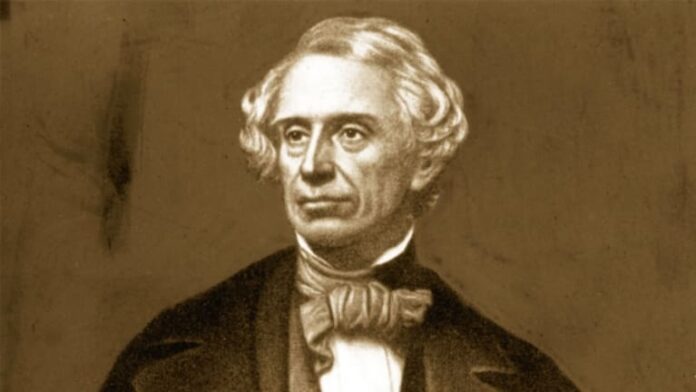
Samuel Finley Breese, also known as Samuel Morse was an American painter and inventor who developed an Electric Telegraph. He was born on April 27, 1791, in Charlestown, Massachusetts, and studied at Yale College (now Yale University) in New Haven, Connecticut. During his graduation he had a keen interest in subjects and lectures of electronics and also in painting portraits.
After graduating from Yale in 1810, he studied art in England as he had great interest for painting and also worked with respected American artist Benjamin West at the Royal Academy. He won a gold medal at the Adelphi Society of Arts exhibition in London for his plaster statuette “The Dying Hercules” and received critical acclaim for the painting of the same subject at the Royal Academy.
On Sept. 29, 1818 he married to Lucretia Walker who died suddenly at age of 25, leaving behind her three sons. In November 1829, Morse went Europe leaving his children in the care of relatives. During his painting carrier his interest for inventions and electronics never faded. While travelling on his way back to home from Europe in 1832, Morse had the conversations with a doctor who told him about European experiments with electromagnetism and from there he got the idea of an electromagnetic telegraph. Being inspired he wrote the ideas for a prototype of an electromagnetic recording telegraph on his sketchbook.
Morse had little training in electricity so he continued to work on the telegraph and in 1835 built a recording telegraph with a moving paper ribbon and demonstrated his prototype to a professor of science at the university next year. He developed a working model of an electric telegraph between 1832 and 1837, began the patent process for the telegraph on Sept. 28, 1837 and attracted many competitors.
Morse’s first telegraph device used one-wire system which was unveiled in 1837. In the month of November he was able to send a message through 10 miles of wire arranged on reels in a lecture room of the university. He devoted his full attention to the telegraph and after so many trials finally in 1840 Morse was granted a U.S. patent for his device. On May 24, 1844, Morse gave the first public demonstration by sending his famous message—”What hath God wrought?”—from Washington, D.C Supreme Court chamber to the B & O Railroad Depot in Baltimore, Maryland.
By 1846, many private companies built telegraph lines from Washington to Boston and Buffalo using Morse’s patent. By 1849, 12,000 miles of telegraph lines were being run by 20 American companies in the United States and by 1854, there were 23,000 miles of telegraph wire in operation. After several breaks, a permanent undersea Atlantic Cable was finally laid in 1866.
On April 2, 1872, Samuel Morse died in New York and buried in Greenwood Cemetery in Brooklyn. His invention was used in different sectors during that period. His contribution in telegraphy was a great promoter in communication devices and also his achievements and powerful, sensitive portraits gave his artistic creativity fame of a painter. His 1837 telegraph instrument is in the Smithsonian Institution’s National Museum of American History in Washington, D.C.













